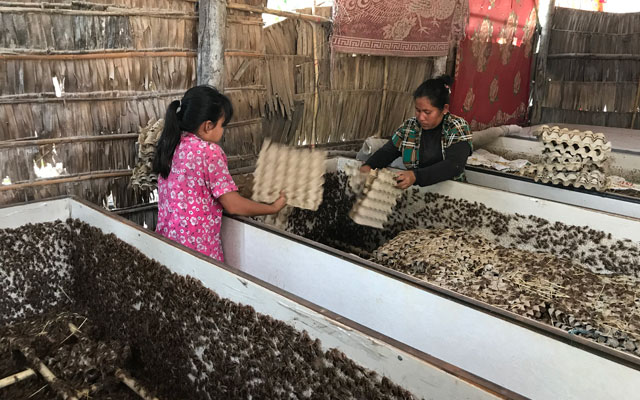The world of agriculture is constantly evolving, and with it comes new innovations and trends in farming practices. One such trend that has been gaining popularity in recent years is cricket farming, as it offers a sustainable and cost-effective source of protein.
Cricket Farming Tours in Cambodia
Japan has recently launched cricket farming tours in Cambodia, highlighting the country's potential as a hub for insect farming. These tours provide visitors with an immersive experience into the world of cricket farming, showcasing the various stages of production, from breeding to harvesting.

So, what exactly is cricket farming and why is it gaining popularity?
Apa Itu Cricket Farming?
Cricket farming is the process of breeding and raising crickets for consumption as a source of protein. This practice is gaining popularity due to its sustainability and cost-effectiveness, as crickets require less space, water, and feed compared to traditional livestock such as cows or pigs.

Mengapa Cricket Farming Populer?
Aside from its eco-friendliness, cricket farming is also gaining popularity due to its health benefits. Crickets are an excellent source of protein and contain essential amino acids, vitamins, and minerals. They are also low in fat and high in fiber, making them a great addition to any diet.
Jenis-Jenis Cricket yang Dapat Dibudidayakan
There are a variety of cricket species that can be farmed, each with their own unique characteristics and nutritional profiles. Some of the most commonly farmed species include the Acheta domesticus, Gryllus bimaculatus, and Teleogryllus taiwanemma.

Kandungan Gizi dalam Tepung Tawon
Cricket flour, the ground up version of farmed crickets, is becoming increasingly popular as a new source of protein in many food products. This flour is a rich source of protein, containing up to 70% protein content and essential amino acids, making it a valuable ingredient in many food products, including protein bars and shakes.
Keuntungan Ternak Jangkrik
Aside from its nutritional benefits, cricket farming offers numerous advantages for farmers as well. Crickets require significantly less space and food compared to traditional livestock, making them ideal for small-scale farmers or those with limited resources. They also produce less waste and require minimal maintenance, making them a low-maintenance and cost-effective option.

Manfaat Cricket Farming
Cricket farming also has a positive impact on the environment, as it requires significantly less resources and produces less waste compared to traditional livestock farming. Additionally, crickets can be fed on organic waste, reducing the amount of waste that ends up in landfills.
Cara Memulai Cricket Farming
Getting started with cricket farming is relatively easy, as crickets require minimal space and maintenance. Farmers can start with a small-scale operation and gradually expand as demand for cricket-based products increases. It is important to note, however, that regulations and standards regarding insect farming vary by jurisdiction, so it is important to research and comply with local laws and regulations.

Tips Sukses Dalam Ternak Jangkrik
Some tips for successful cricket farming include providing crickets with a warm and humid environment, feeding them a balanced diet of organic materials, and regular cleaning and maintenance of their breeding area. It is also important to ensure that the crickets are disease-free and to regularly monitor their health and growth.
Overall, cricket farming offers a sustainable and cost-effective source of protein, with numerous health, environmental, and economic benefits. As more and more people become aware of the advantages of this practice, we can expect to see an increase in cricket-based products and demand for cricket farming tours.